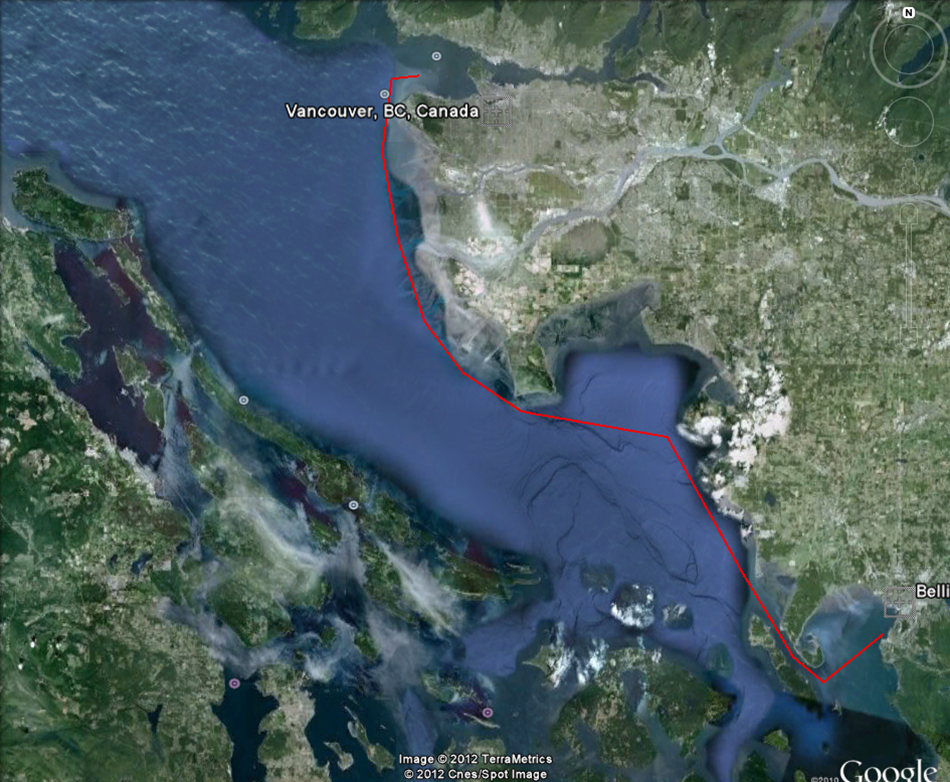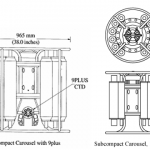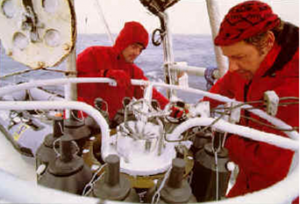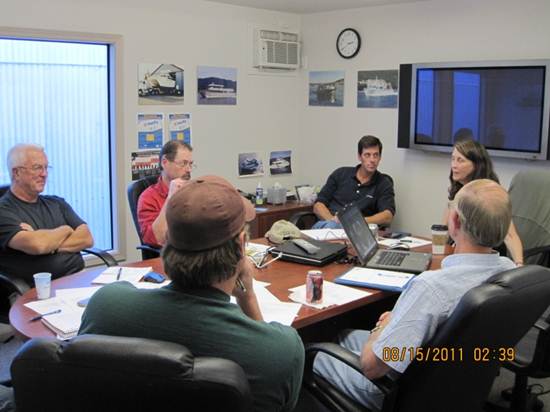We’ve revised the plan for finishing the deck—again. The original plan was to use nonskid paint, but we heard about a blasting process that roughs up bare aluminum, making it nonskid and also avoiding the need to repaint periodically. That option seemed likely to save maintenance dollars, so we decided to blast the deck instead of painting it. But then we learned that bare aluminum decking is highly susceptible to staining by petroleum products and other chemicals. Back to Plan A! All of the walking surfaces will be finished with a garnet sand nonskid paint.
The leading edges of the stairs will wear away before the rest of the surfaces do. When metal stairs are wet, they become slippery and are a potential injury hazard. The steps leading down to the swim platform are of course always wet, and the ones leading up to the 01 deck, the bow along each side of the vessel, and the wheelhouse, galley, and bunks all eventually get wet whenever the deck is wet. Therefore we’re strongly recommending that we install textured nosings and treads on all steps to mitigate this hazard. The treads we’ve chosen also have a night-glow feature: the leading edges of the stair tread are treated with phosphorescence, so they glow for several hours after sunset or lights-out.
We’ve also opted for vertical conduits on either side of the lab to permit shorter cable runs between the computers. Petar suggested this improvement, which will also improve our ability to troubleshoot any future problems.
Still working on alarms for the CPUs. We discussed this issue in some detail at the most recent meeting of the New Vessel Committee. In the current design, the computer systems in the enclosed CPU rack will be protected from overheating by cooled air routed through the rack from the HVAC system. But what happens if the HVAC system fails? Tom has asked AAM to provide a quote to install an alarm system in each CPU rack, powered by the ship’s 12-volt direct current, with automatic set points for these alarms located in the wheelhouse. We can probably buy cheaper self-contained systems, but those rely on batteries.




